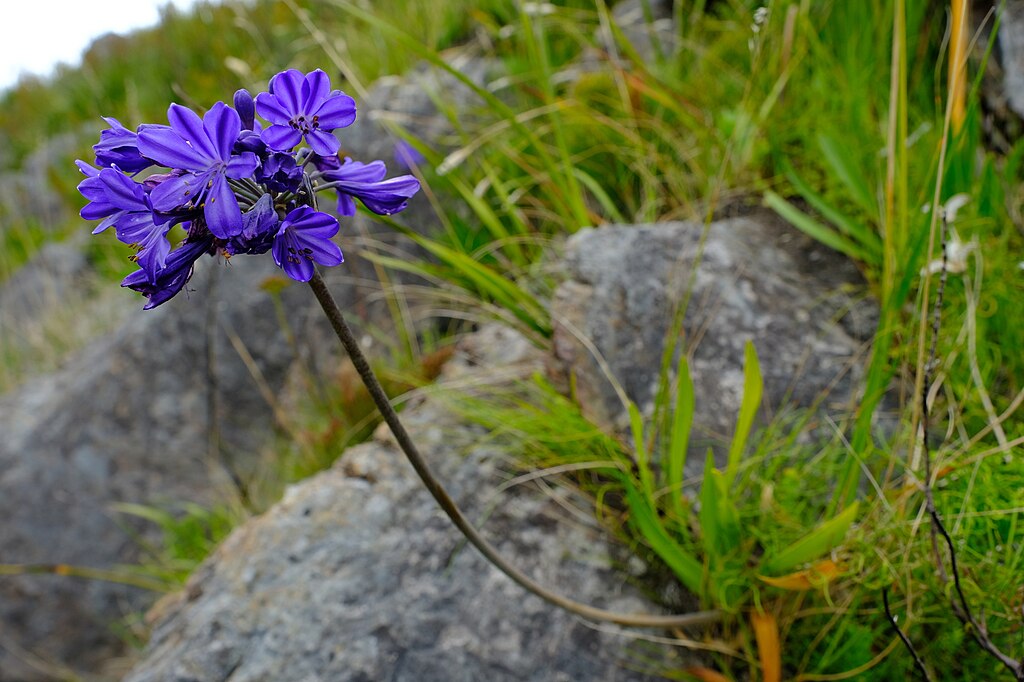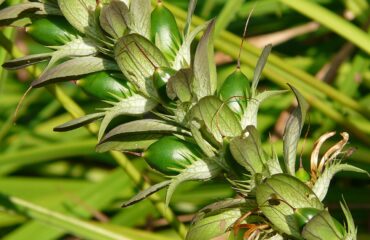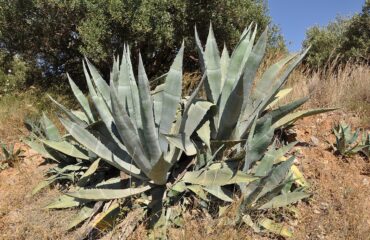Agapanthus africanus, known as the African Lily or Lily of the Nile, is a perennial flowering plant native to South Africa. It is renowned for its striking blue or white flowers that bloom in spherical clusters on tall stalks above lush, strap-like leaves.
Preferred Growing Conditions:
- Soil Type: Well-drained, fertile soil; tolerates a range of soil types including sandy and clay soils.
- Sunlight: Full sun to partial shade; performs best with at least 6 hours of sunlight daily.
- Temperature: Prefers warm climates; hardy in USDA zones 8-11.
- Water Needs: Moderate watering; allow soil to dry out between waterings.
Agapanthus Africanus (African Lily) Propagation Methods:
1. Seed Propagation:
- Seed Collection and Preparation:
- Collect seeds from mature flower heads after they have dried on the plant.
- Clean and dry seeds thoroughly before planting.
- Sowing Techniques:
- Sow seeds in a seed-starting mix or a well-draining potting soil.
- Cover lightly with soil and mist with water to keep the surface moist.
- Provide a warm environment, ideally between 70-75°F (21-24°C).
- Germination Requirements:
- Seeds typically germinate in 4-6 weeks.
- Maintain moisture and provide indirect light until seedlings are large enough to handle.
2. Division:
- The most common and reliable method for propagating Agapanthus.
- Timing:
- Best done in spring or early autumn when the plant is not actively flowering.
- Method:
- Dig up the entire clump and gently separate it into smaller sections with at least one growing point each.
- Remove any dead or damaged roots.
- Replant divisions immediately in prepared soil at the same depth they were previously growing.
- Care:
- Water thoroughly after planting and continue to provide regular moisture until established.
3. Grafting:
- Not typically used for Agapanthus propagation.
4. Rhizome Cuttings:
- Can be used but is less common than division.
- Preparation:
- Cut healthy rhizomes into sections with at least one bud or growth point each.
- Allow cut surfaces to dry and callous over for a few hours.
- Planting:
- Plant rhizome sections just below the soil surface in a well-draining mix.
- Water lightly to settle the soil.
- Rooting:
- Roots and shoots should develop in several weeks.
Care for Newly Propagated Plants:
- Keep newly planted seeds or divisions well-watered until established.
- Protect from frost in cooler climates by covering or moving pots indoors.
- Apply a balanced fertilizer during the growing season to encourage strong growth.
Common Challenges and Solutions:
- Root Rot: Avoid overwatering and ensure good drainage.
- Pests: Watch for snails and slugs, which can damage young plants.
- Flowering Issues: Ensure the plant receives enough sunlight and nutrients.
Additional Tips:
- Deadhead spent flowers to encourage further blooming and prevent seed formation.
- Mulch around the base to retain moisture and suppress weeds.
- Divide clumps every few years to maintain plant health and vigor.
Agapanthus africanus is a stunning addition to any garden, offering vibrant blooms and easy propagation through division. With the right care and attention, these plants will thrive and bring a splash of color to your landscape for many years.
Share this article



